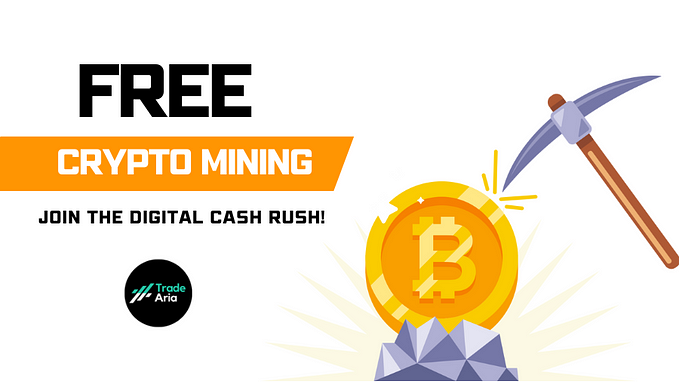
One of blockchain’s first major and primary uses was to serve as a decentralized network where users could transact. In essence, it was to be a major disruption to traditional financial systems such as banks. However, blockchain development has been positive, transforming it into platforms that support the execution of smart contracts.
More recently, the introduction of virtual machines (VMs) majorly contributed to blockchains supporting the execution of smart contracts, leading to new use cases. The Solana Virtual Machine emerges as one of the prominent VMs in the crypto industry.
In this article, we will look into the Solana Virtual Machine, how it works, its differences with the Ethereum Virtual Machine, and its challenges.
What is the Solana Virtual Machine

To understand the Solana Virtual Machine and how it functions, let’s explain virtual machines. Blockchain virtual machines are software emulations of the computer system that function as the execution layer for decentralized applications (dApps). VMs are environments where nodes of a network can compute changes, monitor state changes, and run instances of the blockchain.
The Solana Virtual Machine (SVM) is a software infrastructure that allows the Solana network to execute smart contracts and conduct many other activities on the blockchain. Its developers built it using the Rust programming language, and it was created to handle high levels of transactions on the Solana blockchain in the most efficient manner. Shortened to SVM, this software infrastructure is a virtualized processing technology that executes several demands of smart contracts, including transactions.
It is also described as Solana’s execution environment and functions like a decentralized computer that processes power on all the nodes validating transactions within the Solana network. To initiate any transaction, the Solana Virtual Machine executes the required code while subsequently modifying the network’s state.
How Does it Work?
SVM works as a decentralized system, which means it carries out its functions as separate instances across the nodes on the Solana blockchain. Thus, operating on a distributed system allows the whole Solana network not to crash, assuming there’s a bug in one of the smart contracts. Below, we will discuss how SVM works in more detail.
First, it functions as an execution environment for smart contracts, and it contains nodes distributed worldwide. Since each node within the Solana network runs its instance of the virtual machine, it allows them to carry out their tasks independently.
Secondly, following a laid-out process, the SVM helps run all the smart contracts on the Solana network. When a developer submits a smart contract, the virtual machine first translates it into the language its node can understand. Once this is done, the smart contract is executed on the node. At the same time, any updated blockchain data is synchronized between all nodes.
Also, the Solana Virtual Machine’s parallel execution with SeaLevel is one of its integral workings. A feature named SeaLevel helps the SVM execute multiple smart contracts simultaneously. This significantly improves transaction throughput because SeaLevel resolves conflicts associated with parallel processing. So, SeaLevel identifies transactions that can be processed simultaneously and those that need independent processing. This way, a high volume of transactions is processed while maintaining top-notch data integrity.

Solana Virtual Machine (SVM) vs Ethereum Virtual Machine (EVM)
Below, we will be discussing the major differences that separate the Solana Virtual Machine and the Ethereum Virtual Machine:
Smart Contract Execution
One of the major differences between the Ethereum and Solana Virtual Machines lies in their method of smart contract execution. In an SVM environment, each validator executes smart contracts individually, allowing the transaction throughput to be highly refined. On the other hand, EVM employs a very different method in its smart contract execution, requiring each node to agree on the outcome of any smart contract. As a result, EVM transaction processing times are often slower since all nodes need a consensus before execution.
- Transaction Processing Models

The transaction progressing model of Solana Virtual Machine and Ethereum is quite different; Solana uses parallel processing while Ethereum employs sequential processing. The difference affects how each of them works. On one hand, having a parallel transaction processing model allows Solana to execute multiple transactions simultaneously. On the other hand, the sequential processing model of Ethereum only allows it to process transactions one at a time. Because of this, transactions are slower on the Ethereum network than on Solana.

- Supported Programming Languages
Supported programming languages are another major contrast between the two virtual machines, with Solana possessing Rust and Ethereum using Solidity. Rust is often popular for being suitable and efficient for high-performance applications. At the same time, Solidity was specifically created for smart contracts.
Challenges Associated with the Solana Virtual Machine
The Solana Virtual Machine faces many challenges, but two are the major ones. One is the issues arising from using the parallel transaction processing model. Although it is known to be very effective and efficient in conducting multiple transactions simultaneously, maintaining system security and stability in this type of processing environment is also important.
Because of this issue, the Solana Virtual Machine often needs additional coordination to guarantee integrity when similar transactions that affect the same data are processed simultaneously. This additional coordination also prevents conflicts and complexities when these transactions take place.
Secondly, the programming language employed within SVM, Rust, poses a significant challenge for programmers. While this programming language is quite effective and reliable compared to others, blockchain programmers also need help to learn it. Since it is difficult to learn compared to Solidity, it stalls the adoption rate and development of the Solana Virtual Machine.
Final Thoughts on Solana Virtual Machine
The SVM is an execution environment within the Solana network that enables the execution of smart contracts and the processing of blockchain transactions. It employs the parallel transaction processing model to process multiple transactions simultaneously.
It shares many differences with the EVM regarding supported programming languages and the mode of smart contract execution. Furthermore, it also faces challenges due to the difficulty of its programming language, Rust, to programmers. Nevertheless, the SVM still has much potential, especially with its potential integration with artificial intelligence.
Disclaimer: BingX does not endorse and is not responsible for or liable for any content, accuracy, quality, advertising, products, or other materials on this page. Readers should do their own research before taking any actions related to the company. BingX is not responsible, directly or indirectly, for any damage or loss caused or alleged to be caused by or in connection with the use of or reliance on any content, goods, or services mentioned in the article.










